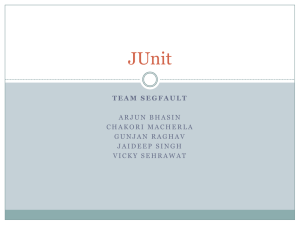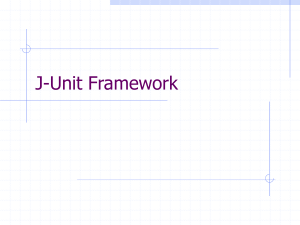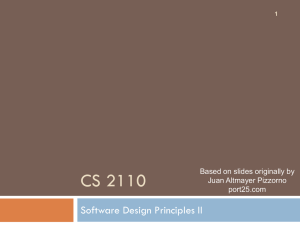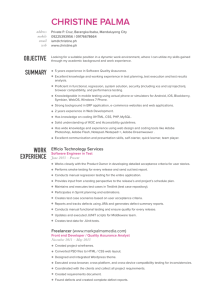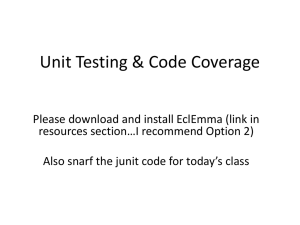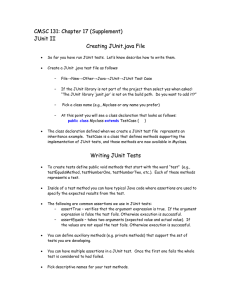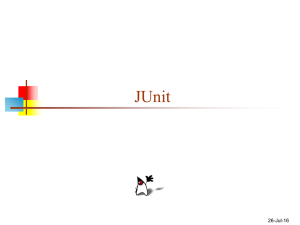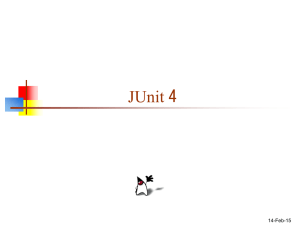Lecture 6, Software Testing
advertisement
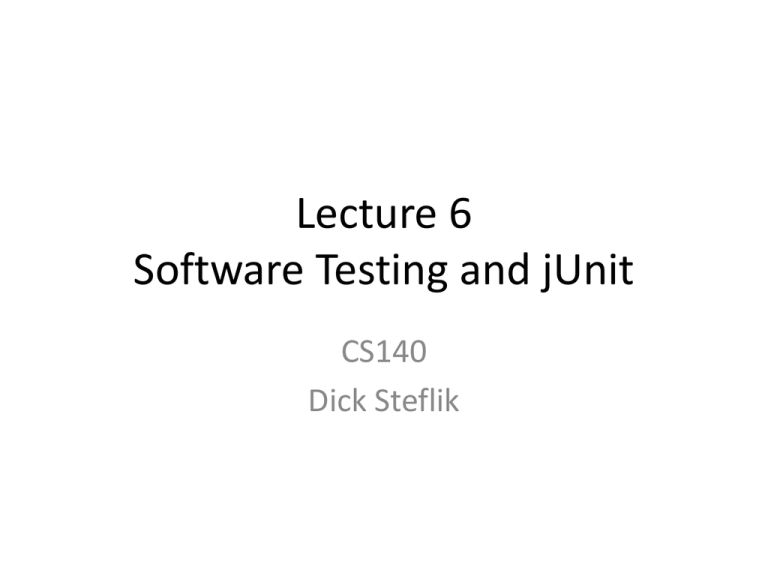
Lecture 6
Software Testing and jUnit
CS140
Dick Steflik
Definition
• Software testing can be stated as the process of validating and
verifying that a computer program/application/product:
–
–
–
–
meets the requirements that guided its design and development,
works as expected
can be implemented with the same characteristics
and satisfies the needs of stakeholders.
Motivation
• a study by NIST in 2002 reports that software
bugs cost the US economy $59.5 billion
annually
• In a study by Cambridge UK , Judge Business
School the global cost is $312 billion
It is commonly believed that the earlier a defect is found, the cheaper it is to fix it.
The following table shows the cost of fixing the defect depending on the stage it
was found.[11] For example, if a problem in the requirements is found only postrelease, then it would cost 10–100 times more to fix than if it had already been
found by the requirements review.
11. McConnell, Steve (2004). Code Complete (2nd ed.). Microsoft Press. p. 29. ISBN 0-7356-1967-0.
Testing Methods
• Static Testing
– reviews , walkthroughs, inspections
• Dynamic
– methodologies that actually use / run the code
• White Box Testing
– testing the internal structures of the software rather than the functionality exposed to
the end user
• Black Box Testing
– tester has no knowledge of how the software works (black box) and only applies inputs
and checks outputs
• Gray Box Testing
– involves having knowledge of internal data structures and algorithms for purposes of
designing tests, while executing those tests at the user, or black-box level. The tester is
not required to have full access to the software's source code
Testing Levels
• Unit Testing
– component testing. In OO environments (C++, Java, Eiffle) this usually
the class level.
• Integration Testing
– Testing to verify the interfaces between components against a
software design
• System Testing
– testing a completely integrated system to verify it meets its
requirements
• Acceptance Testing
– Testing by the customer at delivery time.
Unit Test
• Usually done by the developers while they are
developing the software
• Can involve both static and dynamic methods
• By keeping automated testing code,
programmers can verify that they haven't
broken something along the way.
• Software to manage these tests are often
called code-driven testing frameworks.
xUnit
• Unit testing framework developed by Kent
Beck for the Smalltalk language originally
known as Sunit (1998)
• Ported to Java as JUnit and C and C++ as
CppUnit
xUnit Architecture
•
•
•
•
•
•
•
•
All xUnit Frameworks share a commmon architecture
Test Runner - is an executable program that runs tests implemented using an
xUnit framework and reports the test results
Test case - is the most elemental class. All unit tests are inherited from here
Test fixture - the set of preconditions or state needed to run a test. The
developer should set up a known good state before the tests, and return to
the original state after the tests
Test suites - a set of tests that all share the same fixture. The order of the tests
shouldn't matter
Test execution – test setup , test run , test tear down
Test formatter – formats the test outputs into useable format
Assertions - a function or macro that verifies the behavior (or the state) of the
unit under test. Usually an assertion expresses a logical condition that is true
for results expected in a correctly running system under test (SUT). Failure of
an assertion typically throws an exception, aborting the execution of the
current test.
Sample Junit Fixture
import org.junit.*;
public class TestFoobar{
@BeforeClass
public static void setUpClass() throws Exception {
// Code executed before the first test method}
@Before
public void setUp() throws Exception {
// Code executed before each test }
@Test
public void testOneThing() {
// Code that tests one thing }
@Test
public void testAnotherThing() {
// Code that tests another thing }
@Test
public void testSomethingElse() {
// Code that tests something else }
@After
public void tearDown() throws Exception {
// Code executed after each test }
@AfterClass
public static void tearDownClass() throws Exception {
// Code executed after the last test method }
}
References
•
•
•
•
http://en.wikipedia.org/wiki/Software_testing
http://en.wikipedia.org/wiki/Junit
http://junit.org/
http://www.tutorialspoint.com/junit/

